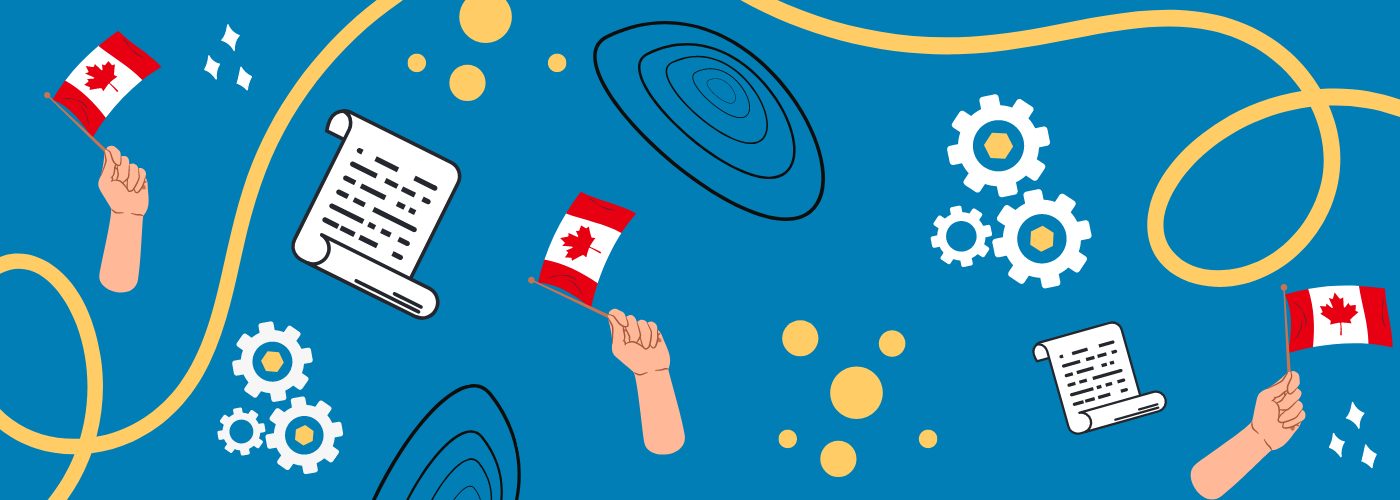The Accessible British Columbia Act
Updated: September 21, 2022
Accessibility in Ontario: How the AODA Impacts Web and Online Video [Free eBook]
In June 2021, the Accessible British Columbia Act became law. The Government of British Columbia (B.C.) passed this legislation to prove its commitment to creating an accessible province for people with disabilities. B.C. has declared its goal of becoming the most accessible province by 2024.
We recommend reading about the Accessible B.C. Act in its entirety on the Government of British Columbia’s website. This blog post will discuss the key takeaways from the legislation.
About the Accessible British Columbia Act
The Accessibility British Columbia Act was enacted to foster an inclusive environment and remove barriers for members of this community. It was the first bill introduced by Nicholas Simons, B.C.’s Minister of Social Development and Poverty Reduction.
As of 2017, 22%, or about 6.2 million members of the Canadian population aged 15 years and over, have one or more disabilities. The effort for an accessible Canada has been underway for quite some time and has also materialized in the form of the Canadian Radio-television and Telecommunications Commission (CRTC) caption laws and the Accessibility for Ontarians with Disabilities Act (AODA).
How the AODA Impacts Web and Online Video in Ontario
Actions to Date
Since the Accessible B.C. Act became law in June of 2021, the B.C Government has taken action in various areas, including but not limited to:
- Improved rights of people using a guide or service dog
- Improved services offered to people on disability assistance for those who are d/Deaf and hard of hearing
- Appointment of 11 individuals as the first members of the Provincial Accessibility Committee
- Proclamation of an annual AccessAbility Week
- Launch of the Accessibility and Inclusion Toolkit, a resource providing step-by-step
instructions to Government staff on how to create accessible digital content
Looking Towards an Accessible Future
The Government has released a plan to continue working towards an accessible British Columbia through 2025. Effective September 1, 2022, over 750 public sector organizations will be required to inaugurate an accessibility plan and committee, as well as create a means to receive feedback on their accessibility.
The province has announced five priorities for the years 2022-25.
1. Creating a Culture of Accessibility and Inclusion
- Further the push to foster a culture of accessibility by developing the “Being Accessible Strategy”
- Support accessibility leadership in public sectors through the Employee Accessibility Advisory Council and the Accessibility Community of Practice
- Encourage staff to raise awareness about accessibility
2. Information and Communications
- Similarly to the AODA, ensure all of the Government’s online media is accessible and meets WCAG 2.0 Level AA requirements
- Connect all rural households to high-speed internet by 2027
- Ensure that emergency plans include the needs of people with disabilities
- Improve library access
- Remove barriers to the identity verification process of the B.C. services card, which provides access to government services for B.C. residents
3. Buildings, Infrastructure, and Public Spaces
- Enhance the accessibility of courthouses with features such as cut curbs, automatic doors, and elevators
- The Nanaimo Correctional Centre Replacement Project is an example of how accessibility improvements will be incorporated into the rebuilding and renovation process of B.C. correctional facilities
- Have accessibility as an eligibility criterion for local governments and not-for-profit organizations to receive funding
- Build more integrated and active transportation systems based on principles of universal design
4. Employment in the B.C. Public Service
- Continue to identify, remove, and prevent barriers to employment with the B.C. Government to ensure that its public service is made up of people who reflect the diversity of B.C.
- This includes designing a centralized system to more adequately support hiring individuals who face barriers to employment
- Review and update current policy and procedures to improve accessibility
- Provide learning and mentorship to employees with disabilities through the Work-Able Internship Program
5. Delivery of Goods and Services
- Address barriers to postsecondary education participation
- Continue to deliver Workforce Development Agreement programs to provide means for overcoming barriers in either training or employment
- Provide free sport, physical activity, and creative arts opportunities for students who face barriers
- Promote B.C. as an inclusive destination through the Strategic Framework for Tourism in B.C.
While there is a long way to go, B.C.’s accessibility plan is a significant step forward in creating equal access for the over 926,000 people living with disabilities in the province.
To read about British Columbia’s Accessibility plan for 2022-25 in more detail, visit the Government of B.C.’s website.
This blog post is written for educational and general information purposes only and does not constitute specific legal advice. This blog should not be used as a substitute for competent legal advice from a licensed professional attorney in your state.





